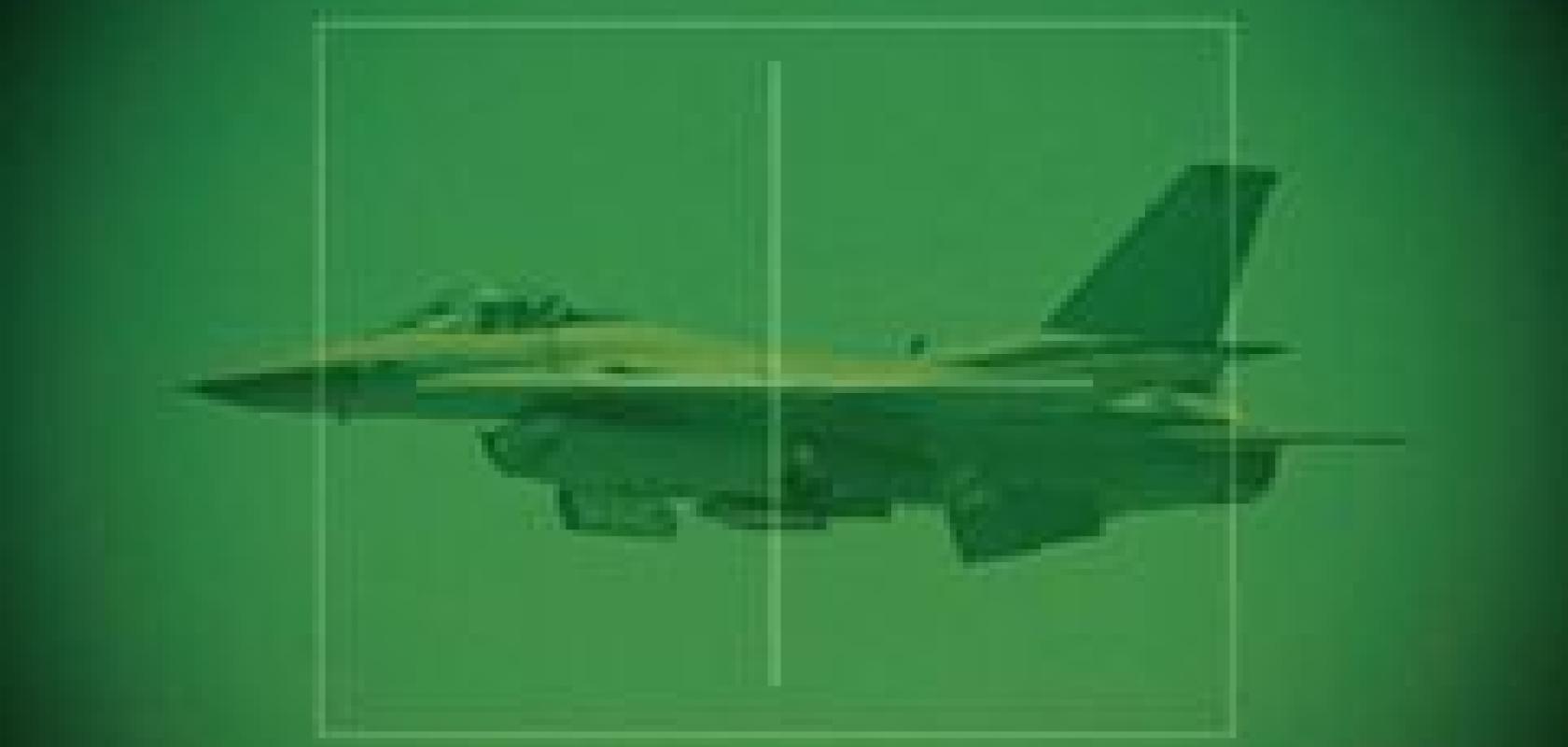If necessity is the mother of invention, then warfare must at least be its first cousin. Throughout history, where two armies met on otherwise equal terms, the soldiers with the more advanced weapons would prevail. Research into defence technologies has always been well-funded, and imaging systems have become a vital part of every modern military.
Night-vision systems now allow combatants to fight in darkness, drive vehicles without headlights, or even fly helicopters without relying on instruments. But as well as equipment for such fighting platforms, there are vision systems now available on the battlefield that can assist individual dismounted soldiers.
The lone warrior
While the infantry remains the mainstay of every fighting force, individual soldiers cannot carry packs heavier than about 36kg and still remain effective. Thus the chief consideration when designing imaging technology for the foot soldier is power consumption, as heavy battery packs or generators cannot easily be transported into battle. The weight of the devices themselves must also be minimised.
In response to the changing needs of the battlefield, soldier modernisation programmes have been commissioned by many militaries. The UK’s development programme is called FIST, or Future Integrated Soldier Technology. The FIST programme covers weapons, clothing, communications, imaging, and power generation. The French military has a very similar programme underway known as FÉLIN (Integrated Equipment and Communications Infantryman). The UK’s Ministry of Defence has opted for a modular system in which each soldier is essentially independent, whereas the French have chosen a system in which each soldier is able to view data from his counterparts. Ian Palmer, project manager at military and aerospace imaging company e2v, believes that the direction of each development programme is a matter of the military doctrine of its host country: ‘If you’re sitting on the front line, engaging an enemy, who needs to know what’s happening? Does the base commander need the information, or the local platoon commander? How much information needs to be transmitted?’ Palmer believes that the answers depend upon the philosophy of the military in question.
Advanced night-vision capabilities are high on the specification list of most future soldier programmes. Early night-vision systems used an image-intensifying tube as their key component – a delicate device, damaged by high light levels or by misuse. First-generation image intensifiers, introduced during the Vietnam War, were only capable of around a thousand-fold light amplification. The second generation of night vision introduced micro-channel plates (MCPs) in order to achieve light amplification of up to 20,000 times. The MCPs are made up of many thousands of hollow glass fibres, formed into a wafer with a nickel-chrome electrode on either side, across which a large potential difference (~1,000V) is applied. The recently introduced third generation of image intensifiers is essentially the same as the second generation, but a GaAs photocathode is used in place of the bi-alkali cathodes used in the original designs. GaAs offers a greater sensitivity to visible light in the 800-900nm wavelength range because of the semiconductor’s high quantum efficiency.
Incident, low-intensity light absorbed by the photocathode of a conventional image intensifier is converted into a stream of electrons, which are then accelerated through the vacuum within the image intensifier tube by a high voltage. The actual visible image is formed when these electrons hit the fluorescent screen at the end of the vacuum tube, converting the electronic signal into visible light, and resulting in the characteristic glowing-green image viewed by the observer. The next development of this principle is to replace the fluorescent screen with an electronic detector, still front-ended by an image intensifier. The Electron Bombarded Active Pixel Sensor (EBAPS), developed by Californian electronics developer Intevac, is a component designed for this application, and one which will be used by the French FÉLIN programme. ITT Systems, the Virginia-based supplier of night-vision components to the US military, is also developing a similar component in the form of its MCP-CMOS. This device places a signal-amplifying MCP behind the photocathode, and integrates the signal on a high sensitivity CMOS chip. ITT is developing these electronic read-outs to form a key part of the US military’s enhanced night-vision goggles (ENVG).
ENVGs, also known as multi-spectral imagers, will be included as part of the US military’s future soldier programme. The idea behind ENVGs is to combine information from a third-generation image intensifier (which sees in the visible and near-IR wavelengths) with an image produced from a thermal sensor, i.e. one which sees in the mid-IR wavelengths.
Data usability
Although the imaging, signal processing, and image combination tasks are all moving towards solid state and all-digital approaches, displays suitable for supplying information to the soldier are still under development. Currently, the most popular displays for the foot soldier are OLED screens, such as those produced by eMagine, a Roanoke, Washington-based micro-display specialist. Compared to an LCD screen (which must be back-lit) an OLED display consumes very little power. In addition, the black of an OLED display is darker than that of an LCD display, meaning that lower light intensities can be used while still maintaining a high enough contrast between light and dark areas for the image to be visible. A low light intensity screen is highly desirable, particularly for night-time applications in which a bright screen could dazzle the operator or give away his position.
Danish vision company Devitech produces a specialised interface to link an uncooled microbolometer to this type of near-eye display, for use in ‘forward observer’ devices, such as thermal binoculars, rangefinders, and laser target acquisition. Niels Heeser Nielsen, CEO of Devitech, explains that such an interface has many requirements: ‘The raw image that comes out of a microbolometer requires a lot of processing because of the non-uniformities that result from the changes in temperature of the device itself,’ he says. ‘A large part of the signal on the detector is radiation from the inside of the camera housing, or the weapons housing.’
The temperature range of what is being imaged can vary greatly, and the processing electronics must also be able to cope with these changes. ‘If you look into a forest just after rain in the middle of the night, for example, then everything is essentially the same temperature, and so you have a very narrow dynamic range. If, however, you look during day time you can have very different temperatures. Depending on what you’re looking at, the dynamic range can change dramatically,’ says Nielsen. In practice, the interface electronics produced by Devitech undertakes real-time analysis of the signal content, adapting the transformation of the signal accordingly to provide the optimum contrast for human perception. ‘Obviously if you’re looking at a machine vision application then you don’t really care what the image looks like; it’s more about being able to extract the features with the accuracy that you need for the application,’ he says. The key objective, however, for military observation applications, is to make the image as easy as possible to view with the human eye.
Fighting platforms
Foot soldiers can march into remote locations that vehicles and supplies might not be able to get to. Where logistics allow it, however, they will be backed up by heavier equipment. Fighting platforms such as tanks, armoured personnel carriers, aircraft, boats, or fortifications do not have the same weight and power limitations as an individual soldier, and are therefore able to make use of a different class of imaging technology.
The EBAPS and the MCP-CMOS are two devices that have taken existing image intensifiers to the point where an electronic image is produced, but both approaches still rely upon photocathode devices, with the associated delicate vacuum tubes and analogue signals. The next step in the development of night vision is to do away with the image intensifier altogether and head to an all-solid-state solution based on either high-sensitivity CCD or CMOS sensors. ‘In the future, it’s going to be the battle of the digital signal processors,’ states e2v’s Palmer. ‘Whether you want to look at the visual band or the thermal band, almost every area is transitioning from vacuum devices to solid state,’ he says.
e2v, for example, no longer produces conventional vacuum-tube image intensifiers. Instead, the company now markets a high-sensitivity CCD known as an EMCCD (electron multiplication), capable of great enough sensitivity to produce an image in low-light conditions without the need of the image intensifier. In order to cut out thermal noise and to achieve the highest sensitivities, the device must be actively cooled. ‘The cooling is a disadvantage,’ says Palmer, ‘but these EMCCDs will not “burn” as photocathode devices do [by looking at a stationary image for a long time], and they can’t be overloaded.’
High QE CMOS imagers are also under development alongside EMCCDs. Standard CMOS sensors are not suitable for low light levels, with the signal-to-noise ratio being the limiting factor. A new class of high-sensitivity CMOS sensors is being produced, capable of very low noise. Crucially, these sensors may be cooled or uncooled, depending on the application, meaning that they may one day be suitable either for the dismounted soldier or for the fighting platform. ‘The jury is out as to how low you can go [in terms of low light levels] without cooling,‘ states Palmer, ‘but because we can achieve very low power consumption, and because these devices are going to be relatively cheap, it may be seen as acceptable that they can only be used in quarter-moonlight or early starlight.’
Multispectral imaging is also set to be important in platform applications: ‘The major application for thermal imaging in general is driver vision enhancement,’ says Devitech’s Nielsen. ‘Situational awareness cameras can provide details of what’s happening all the way around the vehicle. Overhead weapons stations also have cameras. All of these different cameras may be sensitive to different wavelengths, optimised for different purposes.’ In these systems, the latency of the connectivity becomes a key consideration. When driving down a road at speed, the tank driver needs to be confident that the camera will be able to keep up with the world as it passes by. To this end, Nielsen believes that there is enormous potential for systems that can integrate several video streams in real-time, scaling and rotating the images before presenting them to a driver, tank commander or weapons operator.
Specifics and cutbacks
Military specifications ensure that products meet certain requirements in terms of reliability, ruggedness, performance, total cost of ownership, and compatibility with existing systems. In the past, a new piece of kit would have to be certified as full ‘MILL-SPEC’ in order to be eligible for consideration by a nation’s military, but Palmer believes that, at least as far as imaging is concerned, this is becoming less and less realistic. ‘People just can’t afford it anymore,’ he says. ‘As commercial off-the-shelf equipment becomes more and more capable, militaries are becoming less inclined to pay more.’
The question of whether or not a device can be produced for the money a military programme is willing to pay is likely to become ever more salient. The recession of the past year, coupled with a gradual withdrawal from the Iraq war, has led to cuts in defence budgets in both the UK and the US. But with the American military ever eager to ‘own the night,’ there are always going to be opportunities for companies able to apply imaging innovations within the military and night-vision sector.


